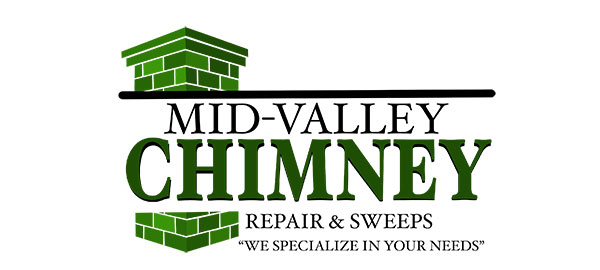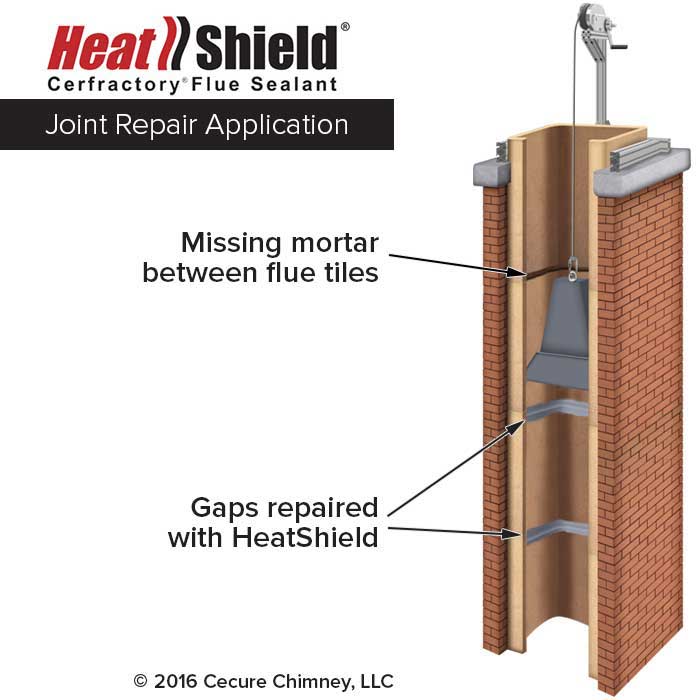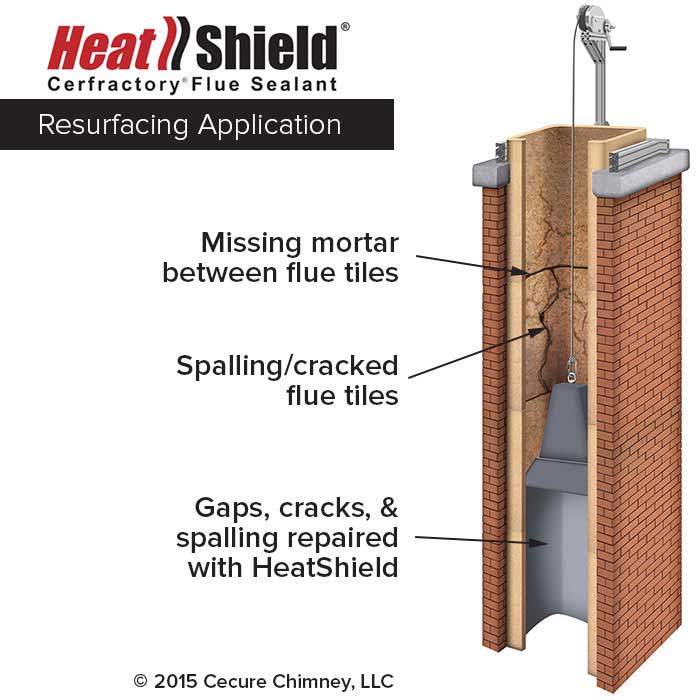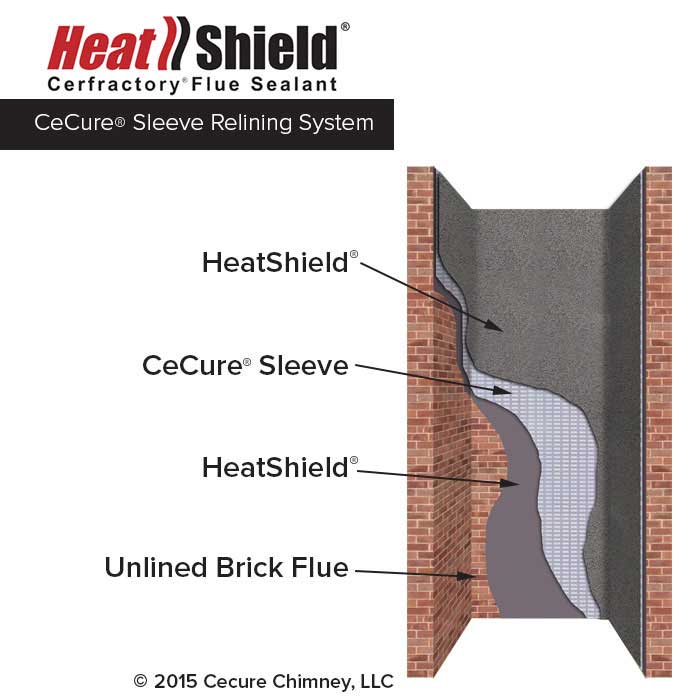Need Your Chimney Relined? Ask Us About Heatshield®
There aren’t many things more soothing than the sound of a crackling fire. When temperatures drop during the long winter months, cozying up in front of your fireplace is a welcome escape from the cold.
That said, as relaxing as a fire can be, using your fireplace often can put stress on your chimney system and some parts may need to be repaired or replaced over time.
One of the most critical parts of your fireplace is the chimney liner. A damaged or cracked liner can result in dangerous toxins entering your home, so it’s important to stay on top of routine maintenance. If you live in the Cincinnati or Montgomery County area, schedule annual inspections with Mid-Valley Chimney. You can trust one of our Chimney Safety Institute of America (CSIA)-certified technicians to find and resolve any possible issues in your chimney system.
What Is a Chimney Liner?
A chimney liner is a protective barrier that runs along the interior of a chimney. An intact liner ensures that smoke, gases, and sparks are safely filtered out of your home. Unfortunately, small cracks and gaps can form in a chimney liner as part of normal wear and tear. In addition, a chimney fire can leave broken flue tiles and holes in the flue liner, increasing the risk of carbon monoxide leaks and structural damage. Because of this, taking care of your liner – and investing in regular sweeps and inspections – is imperative.
Remember – chimney liner damage isn’t easily visible and is typically uncovered during a professional chimney inspection. Work with the best by reaching out to our certified experts to book your next appointment.
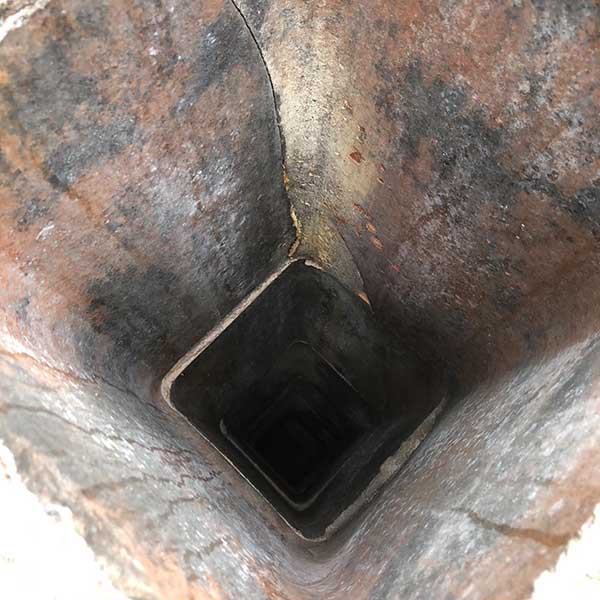
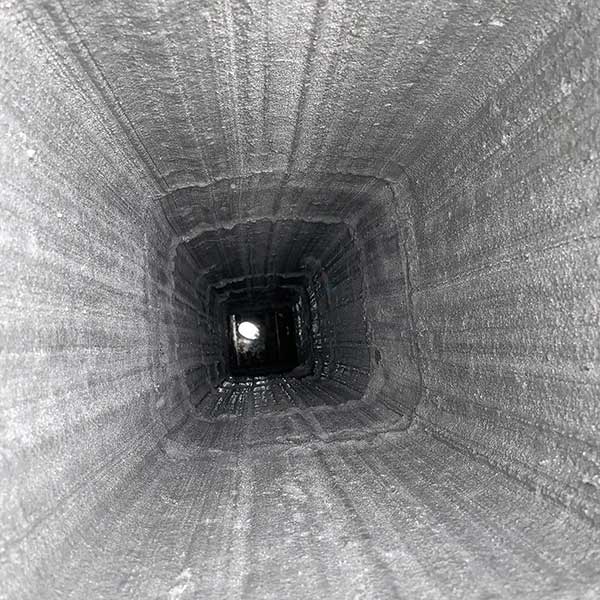
What Are Different Types of Chimney Liners?
Now, what many don’t realize is that there are a number of different liners out there, as well as relining methods. Explore some options below to see what would be best suited for your home, or reach out if you’re not sure where to start.
- Stainless Steel Liners: Stainless steel liners are durable, resistant to corrosion, and capable of withstanding high temperatures. A big perk is that they can be used with many different fuel types like wood, gas, oil, and coal. And the biggest downside of stainless steel liners? The cost – it is the most expensive liner material on the market. That said, you tend to get the biggest bang for your buck with these options.
- Clay Tile Liners: Clay tile liners have been used for many years and are suitable for many chimney types. They are effective at containing the byproducts of combustion, but they can be vulnerable to cracking over time. And if you have a chimney fire, watch out – clay can’t absorb and evenly distribute the heat during the rapid temperature rise that occurs during a chimney fire, causing the flue tiles to crack.
- Cast-in-Place Liners: This relining method requires the application of a specialized cement-like material to the interior of the chimney. It forms a new liner that adheres to the chimney walls, providing a smooth and durable surface for venting. They can improve the structural integrity of aging chimneys and are permanent liners suitable for all fuels.
What Are My Options With HeatShield®?
If you have a clay or terracotta liner in need of repairs, you should consider HeatShield®. With HeatShield®, we offer a Joint Repair System if you simply need some gaps or voids filled, a Resurfacing System for flues that are facing more significant cracking or spalling, and a CeCure® Sleeve Relining System for systems that are unlined (or so damaged that they need an entirely new liner applied). All HeatShield® methods are completed with the aid of camera equipment to ensure that relining is successful.
- Joint Repair System: The mortar joints between each clay tile of the flue liner can erode or weaken leaving your chimney with gaps. The Joint Repair System may be a good option to repair small cracks and gaps in mortar joints. For this process, we make an applicator blade that is custom-fitted for your chimney and fill each gap with HeatShield®’s Cerfractory® Flue Sealant mixture.
- Resurfacing System: Sometimes, we find more significant damage like cracked tiles or spalling flues. For those situations, the Resurfacing System is the way to go. Instead of just filling gaps, we apply several coats of HeatShield®’s Cerfractory® Flue Sealant mixture to the entire chimney, creating a new protective surface and restoring your chimney to its original condition.
- CeCure® Sleeve Relining System: If your chimney is unlined or there is substantial damage, the CeCure® Sleeve Relining System is the best approach to making your fireplace as safe as possible. The CeCure® Sleeve is a thin, ceramic piece of insulation that has been reinforced with stainless steel fabric. The sleeve is placed between two coats of HeatShield® Cerfractory® Flue Sealant.
Why Should I Choose HeatShield®?
There are several ways to repair a chimney liner, but HeatShield® is a popular choice for a number of reasons.
- Environmentally Friendly: For eco-conscious homeowners looking for green solutions, HeatShield® is created using recycled and naturally occurring materials.
- More Durability: HeatShield®’s Cerfractory® Flue Sealant is a hybrid of ceramic and refractory materials that can withstand moisture, corrosive gases, and temperatures exceeding 2900 degrees Fahrenheit. It’s rated a “Super-Duty” refractory mortar by the American Society for Testing and Materials (ASTM), surpassing both the National Fire Prevention Association (NFPA) and International Residential Code (IRC), both of which require only a “Medium-Duty” refractory mortar for use in fireplaces and chimneys.
- Warranty Coverage: HeatShield® is covered by a limited lifetime material warranty for the Resurfacing System and the Joint Repair services.
- Cost Effective: Don’t put off fixing your chimney because of budget concerns – it will just end up costing you more money. HeatShield® is a more affordable alternative to expensive metal liners or rebuilding your chimney.
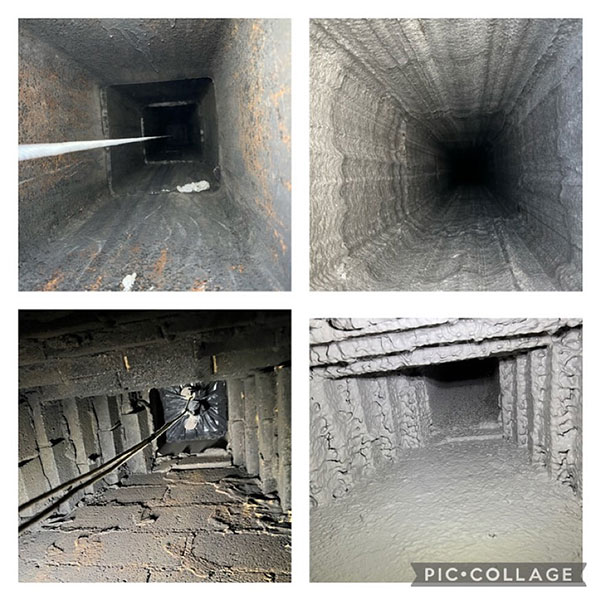
My Chimney Is Unlined, Why Should I Have It Lined Now?
If you own an older home, it’s possible that your chimney isn’t lined at all. Although most fire codes now require homes throughout the country to have chimney liners, it wasn’t a mandate in most states until the mid-century.
So if your home doesn’t even have a chimney liner, what’s the big deal about adding one now? Chimney liners are an additional layer of protection for your home because they insulate the chimney from extreme heat and help to manage airflow, allowing the chimney to work more efficiently.
Unlined chimneys present an increased chance of fire because the smoke, fumes, and heat from your fires will have easy access to the interior parts of your chimney. This could trigger cracking, breakdowns, and other damage, all of which makes it more likely for flames – and smoke and poisonous gases, for that matter – to enter your home.
How Can Damages to My Liner Affect Me?
What happens if your liner isn’t repaired and simply continues to face damage? Well, you’ll be more likely to experience…
- Fire Hazards: One of the biggest reasons liners are needed is to prevent damage to the exterior brick and protect your home from fire hazards, as well as limit the heat transfer into your home structure. Even the smallest defects can put you and your system at risk and trigger more damage down the line. This is an area you don’t want to neglect.
- Gas Leaks: Because your system produces harmful gases, ensuring your family is protected from these potential toxins is imperative. If openings and imperfections are present in your chimney liner, harmful fumes will have ample opportunity to enter your household, putting the health of those within it at risk.
- Lowered Efficiency: Chimney liners need to be tight and damage-free to send smoke and fumes safely up the chimney. If cracking, gaps, or holes are present, you can bet that efficiency will be lowered significantly, and the system will consistently perform poorly.
Concerned about the current state of your system? We’d love to hear more about your situation. Give us a call or reach out to us online to get the conversation going.
How Do I Know if My Chimney Needs a New Liner?
Unless you have a trained eye for chimney damage, it may be hard to tell whether or not you need a new liner. Because of this, keeping up with annual professional inspections and regular maintenance is the best way to get ahead of small problems before they become bigger, pricier issues.
That said, if you are in between annual inspections and begin to notice changes in your fireplace’s performance, or spot clay pieces or flakes collecting in the hearth, more moisture, or smoke backing up into your living area, call Mid-Valley Chimney right away. These could be indications that something may be wrong with your chimney liner – or some other part of your system – and the sooner we take a look, the better.
And if you’re a new homeowner? Well, remember that real estate inspections rarely cover the full chimney. Unless an actual certified chimney technician comes to look, it’s likely things are getting missed that could otherwise be worked into the price of the home. So, before closing on your house, contact us for an independent chimney inspection. One of our CSIA-certified chimney technicians will be able to tell you the condition of the chimney and if the chimney liner is intact and suitable for use.
How Long Should Chimney Liners Last?
In general, chimney liners can last up to 30 or more years depending on usage and maintenance. That said, there are many factors that can shorten the lifespan of a chimney liner.
For instance, while clay liners are most common (because clay is relatively inexpensive compared to other materials), they are the most prone to cracking and deteriorating over the years. Why? Because they are not meant to withstand direct contact with flames or rapid temperature changes.
As with any household appliance, regular service can preserve your chimney and extend its lifespan. In addition, consult with us about which would be the best – and most long-lasting – option for your specific needs and setup.
Schedule an Appointment To Get Your Chimney Relined
Mid-Valley Chimney is a family-owned, full-service chimney company that has proudly served residents in the greater Cincinnati and Montgomery County area for years. We have strong values and ethics, are certified with the Chimney Safety Institute of America (CSIA), and we have one multiple industry award for great service. If you need a team of experts to rely on for the long haul, we’re it.
Whether you have to schedule an inspection, book chimney repairs, or inquire about having your chimney liner replaced, our team can get the job done. Reach out to us at 513-727-0994 or inquire about our services online. Our customer service representatives are standing by and ready to help.
Our chimney and fireplace services include all kinds of chimney repairs to keep your system safe to use year after year.
